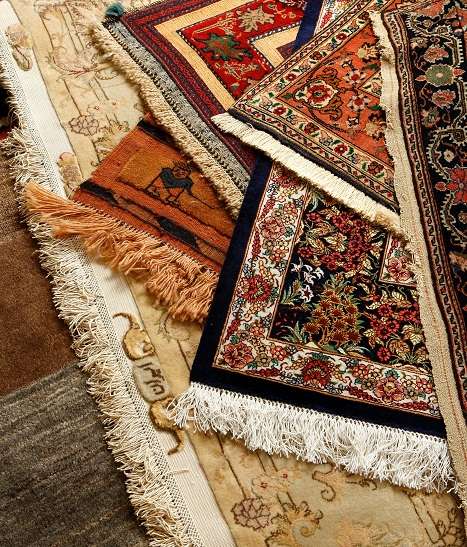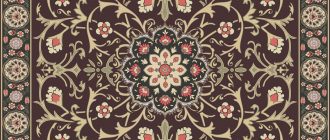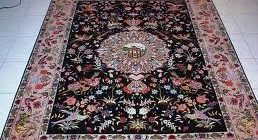Iran is famous for Persian carpets. Persian carpet weaving is the most popular Iranian craft and the carpets are famous for their high quality and intricate designs.
It is not certain whether carpet making originated in Iran as historical examples of carpets have been found across the globe. It is likely that carpet making evolved spontaneously across different countries. However, it is acknowledged that the Iranians were pioneers of this beautiful art within the ancient world.
There are suggestions that the art of carpet weaving was introduced to Iran by Cyrus circa 500 BC. His tomb was covered by the most beautiful Persian carpets. Cyrus was revered for his great achievements in growing the powerful Persian Empire.
To this day, Persian carpets produced within Iran continue to be used for both practical needs and also to serve primarily as works of art. The Persian carpets which serve as works of art, are typically passed down through families as heirlooms. However, perishable materials are used to weave the carpets (silk, wool and cotton), and subsequently the carpets do not survive indefinitely. In addition to the carpets themselves, the intricacies of Persian carpet weaving skills are also transferred within families which focus on this art for their livelihoods, so that upon adulthood, individuals are already experts.
Iranian families treasure their Persian carpets greatly. They are of great importance and value within the home and intricately entwined with their cultural states – both current and historical. In fact, Persian carpets are often referred to as Iranian stocks and shares!
Each carpet is unique and no two hand woven carpets are the same. Not only is there variation between Persian carpets, but there is also great diversity depending on the area within Iran in which the carpet originated. Each area producing carpets within Iran uses techniques and methods specific to their particular region and the carpets will hence be influenced as such by the cultural nuances and values of that area. Famous carpet weaving areas in Iran in clude Isfahan, Shiraz, Tabriz and Qum.
The final products are then named after the area within Iran in which they were produced.
The reputation enjoyed by Iran for the quality of its Persian carpets was almost destroyed by the demands made on carpet weavers by the West during the 19th century. There was great demand for cheap carpets at the expense of quality materials and for the first time in the history of Persian carpet making within Iran, cheap dyes and poor quality materials were used, coupled with designs driven by the West which were not in keeping with the cultural designs traditionally displayed on Persian carpets. It took great effort on behalf of the government to reverse this trend and to restore the art to its traditional form.





